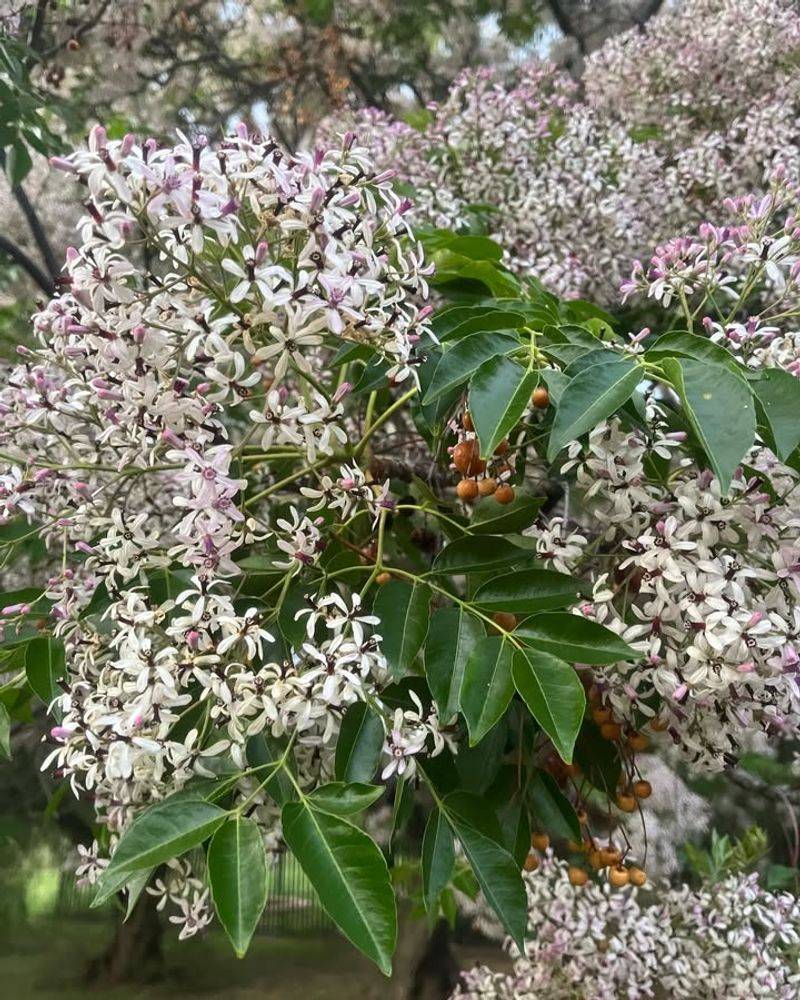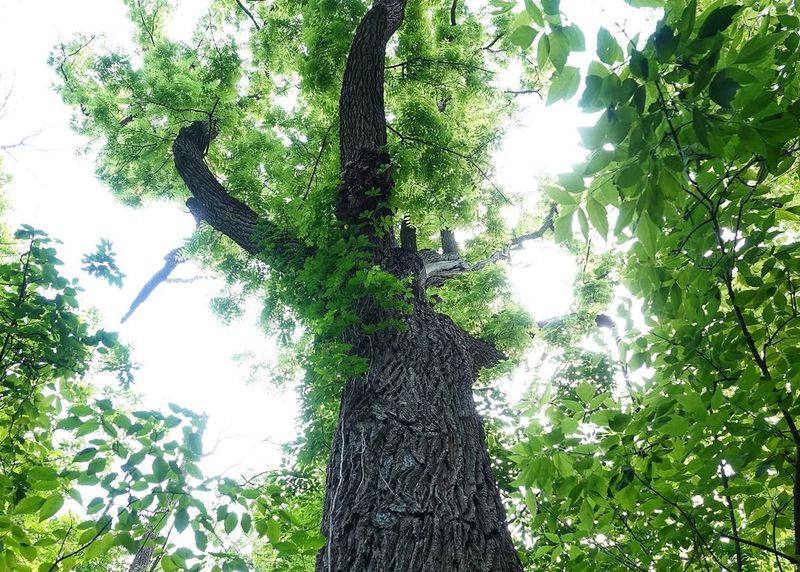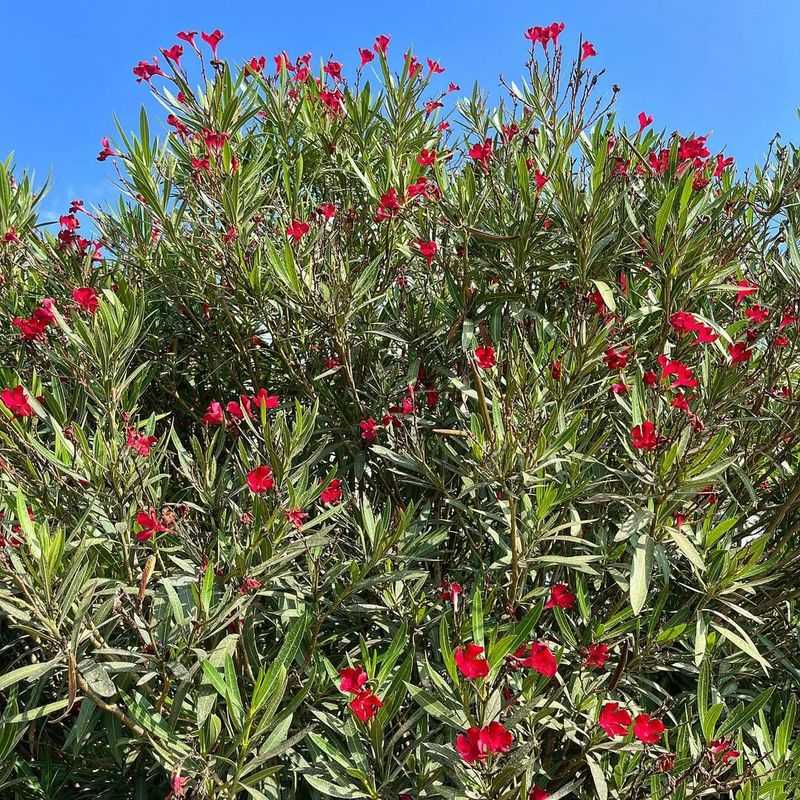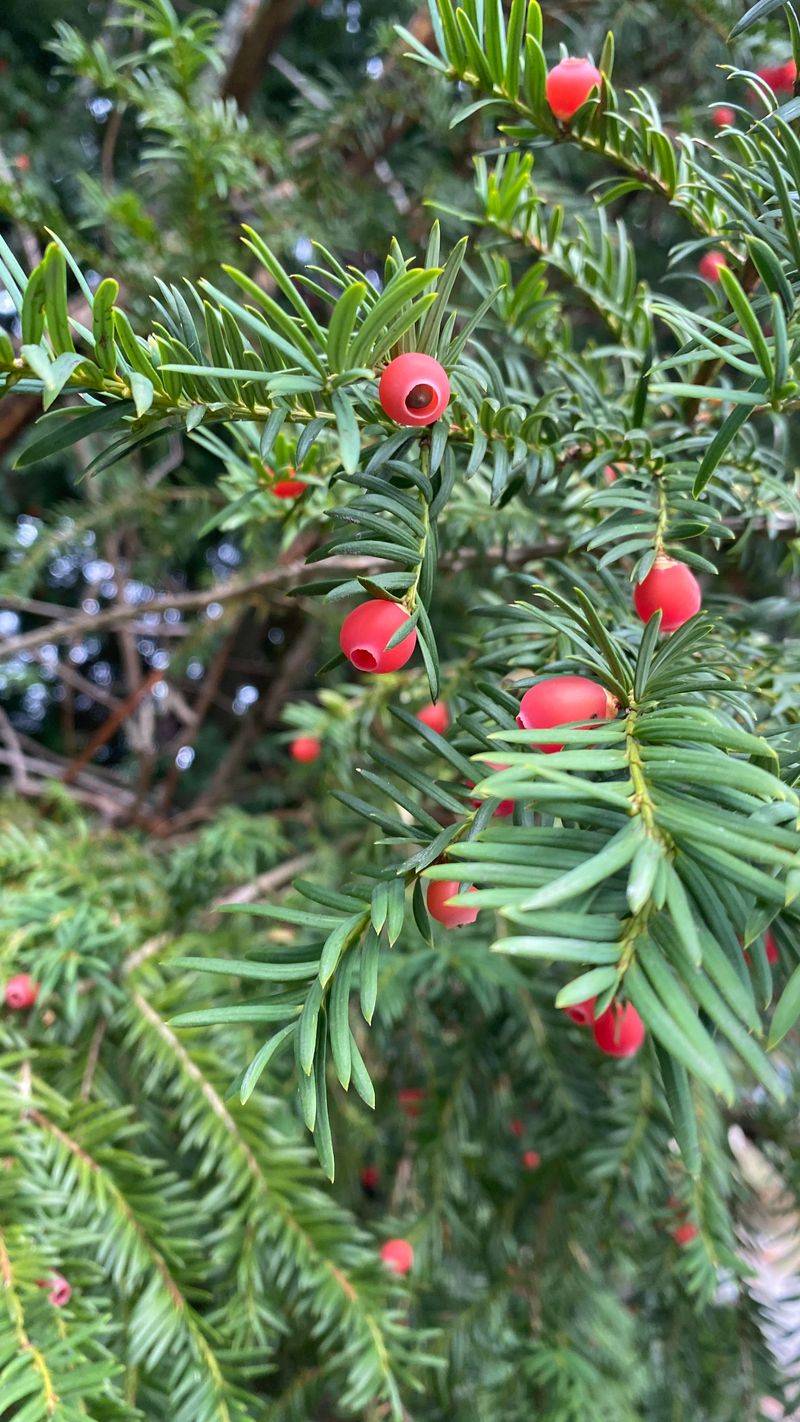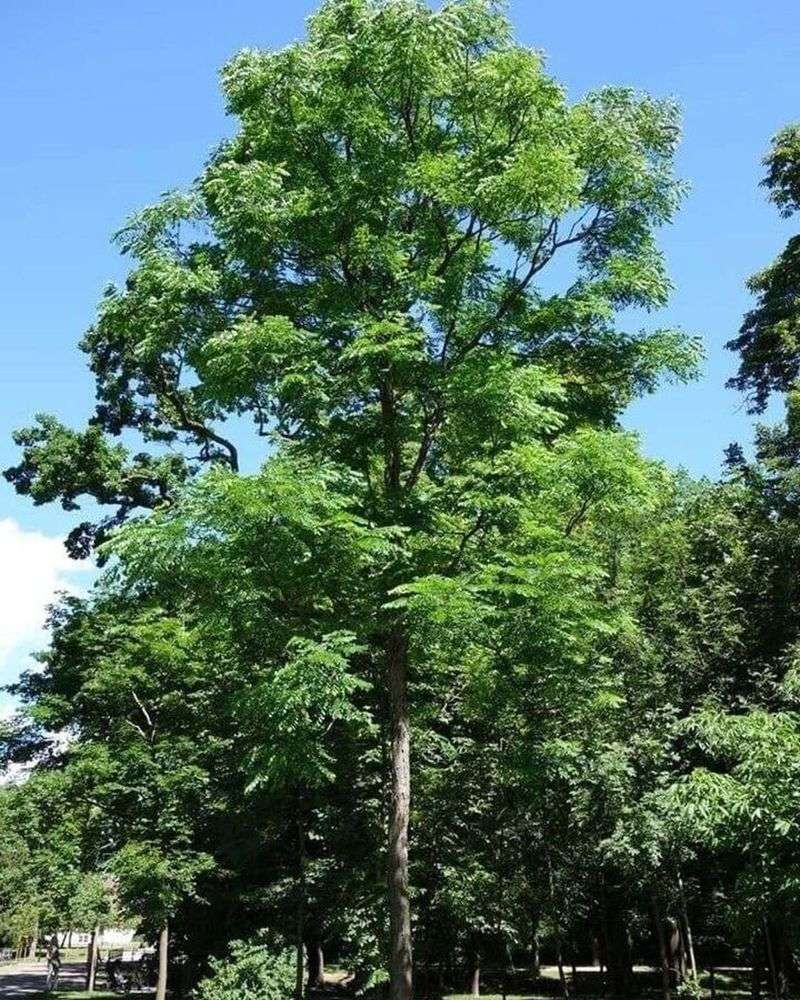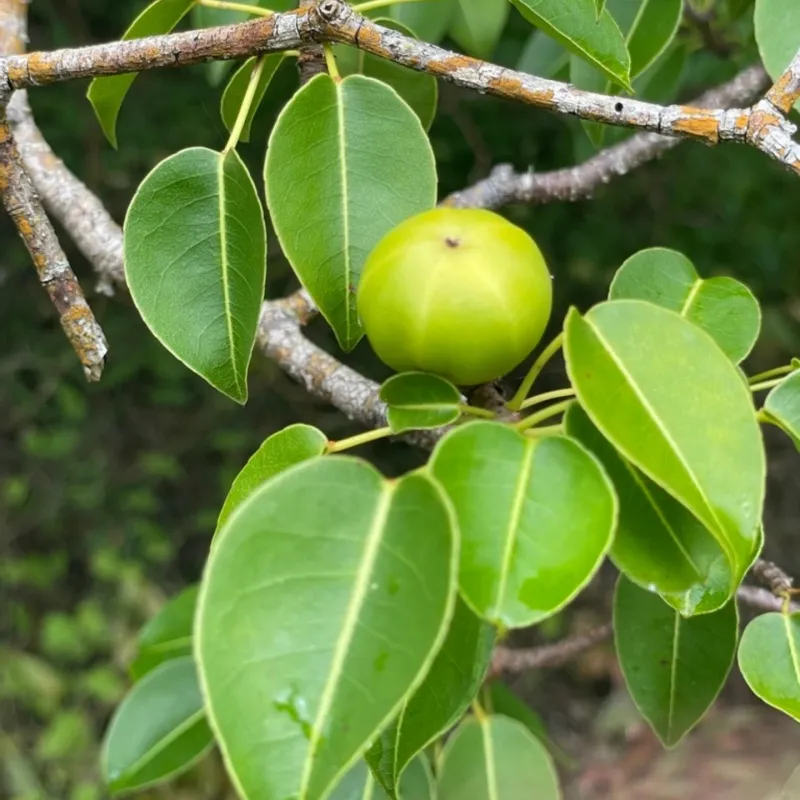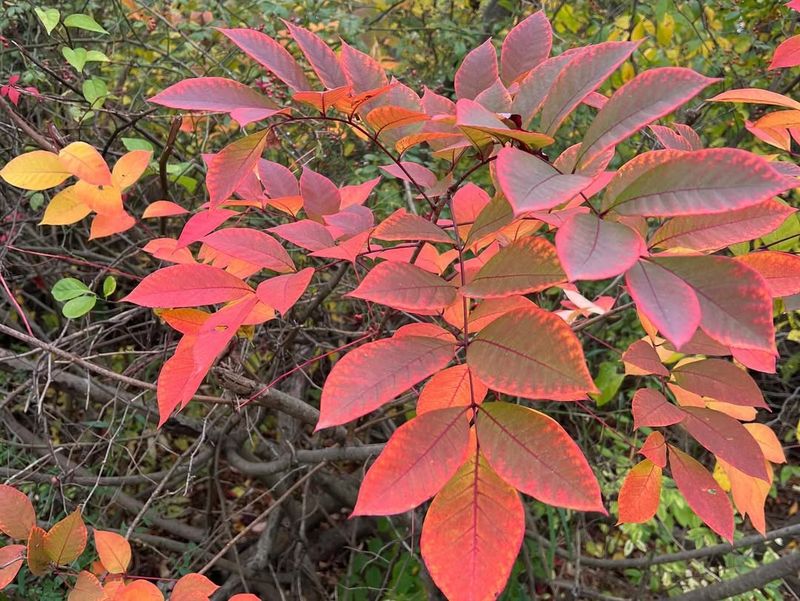Some trees look beautiful but can quietly cause a lot of trouble around your home. In South Carolina, certain varieties are more harmful than you might think.
Knowing which ones to avoid can save you headaches, extra bills, and even protect your pets. Let’s explore these toxic trees so your yard stays safe and stunning.
1. Chinaberry Tree
Chinaberry trees grow fast and provide lots of shade, making them popular in many South Carolina neighborhoods. But their yellow berries contain powerful poisons that affect the nervous system.
Kids might find the berries tempting to pick or play with. Even small amounts can cause serious stomach problems, confusion, and breathing troubles.
Pets that chew on fallen berries or leaves face similar dangers. Consider replacing this tree with safer shade options like oak or maple varieties native to your region.
2. Black Walnut Tree
Many homeowners in South Carolina appreciate black walnut trees for their beautiful wood and tasty nuts. The problem lies in a chemical called juglone found throughout the tree, especially in roots and husks.
This substance harms nearby plants and can irritate skin when people handle the nuts without gloves. Horses are particularly sensitive and can develop serious hoof problems from exposure.
Dogs occasionally experience upset stomachs from eating the husks. Plant friendlier nut trees like pecans instead, which grow wonderfully across the state.
3. Oleander Tree
Oleanders produce gorgeous flowers in pink, white, and red that brighten any South Carolina landscape. Every single part of this plant contains cardiac glycosides, which are extremely dangerous chemicals.
Chewing even one leaf can cause heart rhythm problems and severe sickness. Smoke from burning oleander branches is equally hazardous, so never use them for campfires or firewood.
Keep these far from areas where children play or pets roam freely. Better flowering alternatives include crape myrtles or azaleas, which offer beauty without the risk.
4. Yew Tree
Yew trees stay green year-round and work well as privacy screens in South Carolina yards. Their red berries look like tiny cups and might attract curious children exploring the garden.
Nearly every part contains taxine, a substance that affects the heart dangerously fast. Symptoms can appear within just an hour of eating the needles or seeds.
Even deer avoid browsing on yews because of their harmful nature. Switch to holly bushes or eastern red cedars for evergreen screening that won’t threaten your family’s wellbeing.
5. Kentucky Coffee Tree
With its interesting bark and huge leaves, the Kentucky coffee tree catches attention in South Carolina landscapes. The large brown pods contain seeds that were once roasted as a coffee substitute by pioneers.
Raw seeds and pods contain cytisine, which causes severe digestive upset and muscle weakness. Children might mistake the pods for playthings or try tasting the seeds inside.
Livestock have become seriously ill from eating fallen pods in pastures. Choose safer shade trees like sycamores or sweetgums that drop harmless seeds and provide equally impressive coverage.
6. Buckeye Tree
Buckeye trees produce shiny brown nuts that look almost good enough to eat, which makes them particularly risky around South Carolina homes. The attractive nuts contain glycosides that affect muscles and nerves when consumed.
Kids collecting nature items might pocket these dangerous seeds. Squirrels somehow process the toxins safely, but humans and pets cannot.
Even touching the nuts repeatedly can irritate sensitive skin. Red maples or dogwoods offer similar seasonal interest without producing hazardous seeds that tempt children or endanger animals wandering through your property.
7. Horse Chestnut Tree
Horse chestnut trees create spectacular spring displays with white flower spikes throughout South Carolina neighborhoods. Their spiky green pods split open to reveal glossy brown nuts that children might collect.
These nuts contain aesculin, causing nausea, weakness, and coordination problems if eaten. The similarity to edible chestnuts makes them especially dangerous, as people might confuse the two species.
Pets chewing on fallen nuts experience similar symptoms. Consider planting Southern magnolias or tulip poplars instead, which provide impressive blooms and shade without producing hazardous seeds around your home.
8. Manchineel Tree
Found occasionally in coastal South Carolina regions, the manchineel tree produces small fruits resembling crab apples. This species ranks among the most dangerous trees in the world.
The milky sap causes severe skin burns and blistering on contact. Eating the fruit leads to intense burning and swelling that can become life-threatening.
Even standing under the tree during rain can cause skin reactions from sap-contaminated water dripping down. If you spot one on your property, contact professional removal services immediately and choose safer coastal species like live oaks or palmettos.
9. Poison Sumac Tree
Poison sumac grows in wet areas throughout South Carolina, often near ponds or swampy sections of properties. Its compound leaves turn brilliant colors in fall, but beauty comes with serious consequences.
The entire plant contains urushiol, the same oil found in poison ivy but in higher concentrations. Skin contact causes severe, spreading rashes with painful blisters.
Burning the wood releases toxic smoke that can damage lungs if inhaled. Identify and remove these trees carefully, wearing full protective gear, then replace them with safe wetland species like bald cypress or river birch.
10. Yellow Jessamine Tree
As South Carolina’s state flower, yellow jessamine grows abundantly and many residents welcome it in their yards. When trained into tree form, it creates beautiful focal points with fragrant yellow blooms.
However, all parts contain gelsemine and other alkaloids that affect the nervous system. Children who suck on the sweet-tasting flowers can experience serious symptoms.
Bees that collect nectar from jessamine sometimes produce honey with trace amounts of these compounds. While the plant holds cultural significance, consider keeping it away from play areas and choosing Carolina jasmine alternatives for safer landscaping around your property.


